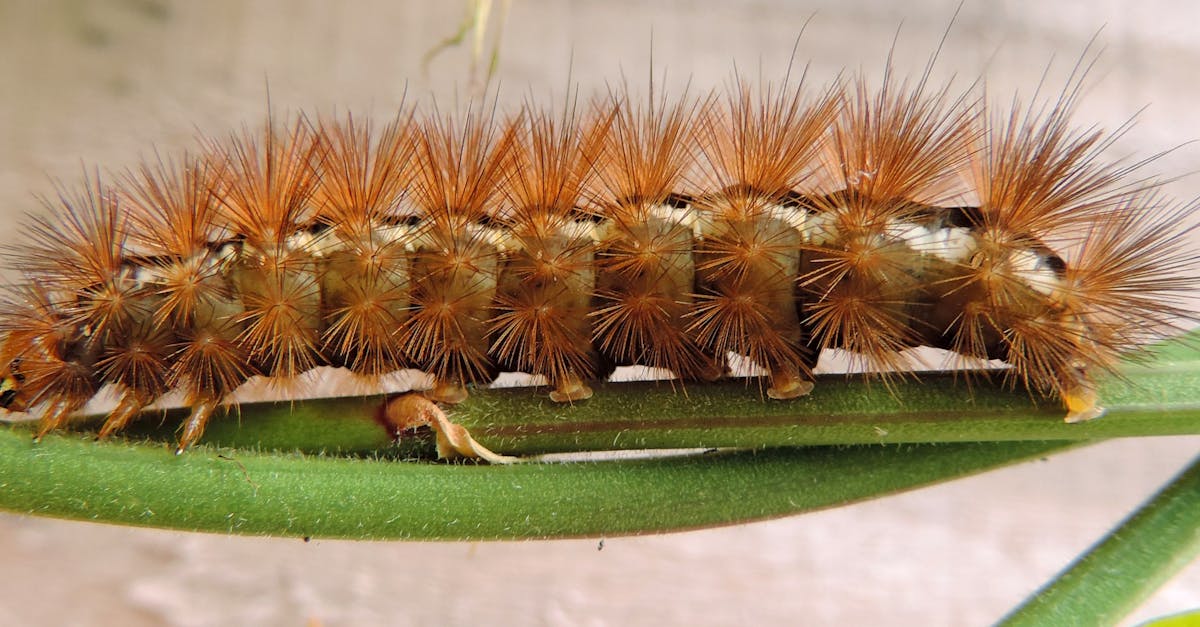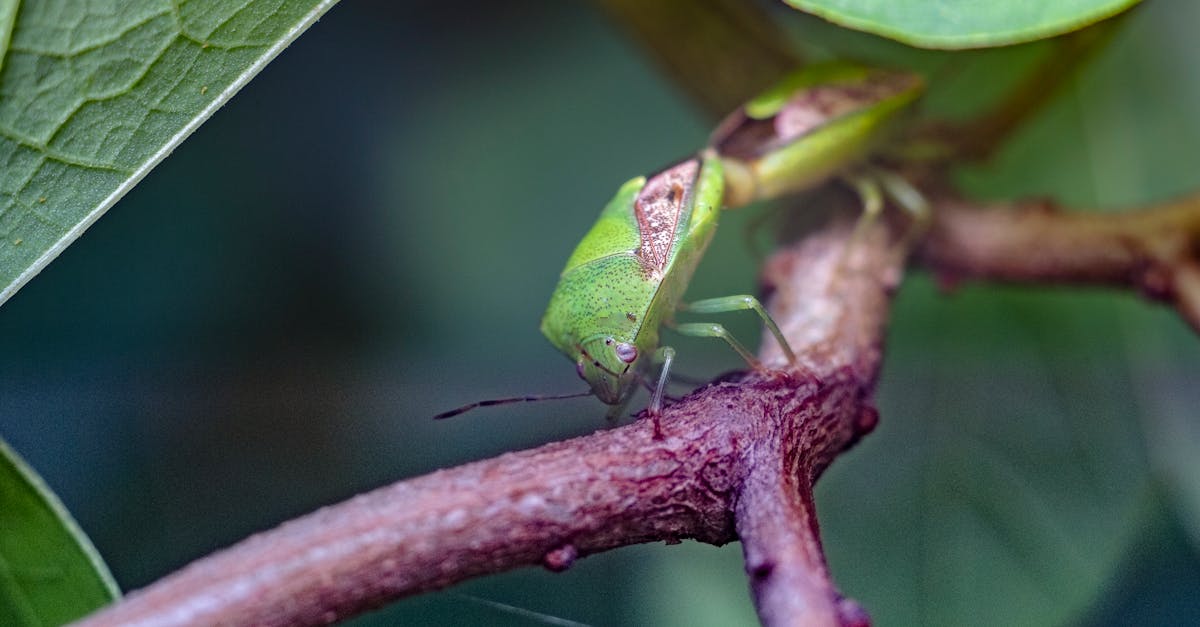Harmonizing Homes and Habitats: A Holistic Approach to Pest Management

In a world increasingly conscious of environmental impact and health, the demand for natural pest elimination methods is on the rise. This has been driven by a collective aversion to the harmful effects of chemical pesticides and a growing preference for sustainable living. From reducing ecological harm to promoting a cleaner, safer environment for families and pets, the shift towards natural pest control is reshaping how we maintain our living spaces. This article delves into understanding the need for natural pest elimination, explores its benefits for home environments, and provides insights into effective techniques, implementation strategies, as well as future trends. By examining both the advantages and limitations of natural pest control, we strive to offer a comprehensive view of this evolving approach, aiming to inform and guide those seeking a cleaner, eco-conscious lifestyle.
1. Understanding the Need for Natural Pest Elimination
Thank you for reading this post, don't forget to subscribe!
The need for natural pest elimination has gained momentum due to a collective recognition of the drawbacks associated with traditional pest control methods. Chemical pesticides, once hailed as revolutionary solutions, have left a significant environmental footprint, impacting ecosystems, wildlife, and even human health. The shift from these conventional approaches to eco-friendly alternatives has been driven by an increasing demand for cleaner living spaces and practices aligned with sustainability. This gradual transformation reflects a broader societal acknowledgment of the adverse effects of chemical pesticides and the pressing need for natural pest control methods to mitigate these impacts.
As consumer awareness continues to evolve, sustainable living practices are gaining ground. This has led to a growing preference for eco-friendly pest elimination, reflecting a paradigm shift in consumer behavior towards environmentally sound solutions. The rising demand for natural pest control signifies an essential pivot towards maintaining cleaner, healthier living environments while reducing reliance on detrimental chemical treatments. This changing consumer sentiment has catalyzed a reevaluation of traditional pest control practices, aligning with a global ethos that embraces eco-conscious living and promotes the well-being of both humans and the environment.
Moreover, the quest for eco-friendly alternatives does not exist in isolation. It represents a broader societal aspiration to cultivate sustainable habits within homes and communities. Thus, the exploration of eco-friendly pest control alternatives resonates with a larger movement towards environmentally responsible practices and the pursuit of a harmonious coexistence with nature.
Environmental Impact of Chemical Pesticides
The use of chemical pesticides has undeniably left a lasting impact on the environment, wildlife, and human health, prompting an urgent reassessment of pest control methods. Over the years, the extensive application of chemical pesticides has led to a range of ecological consequences, disrupting ecosystems and potentially endangering various species. The long-term effects of these pesticides have raised concerns about their influence on wildlife populations, often resulting in unintended harm to non-target organisms within ecosystems, and even contributing to the decline of certain species. Additionally, the impact on human health remains a focal point, as exposure to chemical pesticides has been linked to potential health risks, necessitating a more critical evaluation of these conventional pest control solutions.
The urgency for natural pest control solutions is further underscored by the need to mitigate the environmental repercussions of chemical pesticides. Adopting an eco-friendly approach is imperative in addressing the environmental toll exacted by these chemicals, as it offers a pathway to restore ecological balance and minimize harm to natural habitats and wildlife. This shift signifies a broader acknowledgment of the interconnectedness of ecosystems and the necessity to adopt pest control methods that do not jeopardize the delicate balance of nature while safeguarding human and environmental well-being.
Given the increasing awareness of these ecological and health impacts, the call for natural pest control solutions continues to gain traction, signifying a pivotal juncture where the conscientious choice of pest control methods can significantly contribute to preserving biodiversity, protecting habitats, and promoting safer living environments.
Consumer Shift Towards Sustainable Practices
The ongoing shift in consumer preferences towards sustainable and natural products has permeated various aspects of daily life, including pest elimination methods. This paradigm shift reflects a broader societal trend where individuals are increasingly prioritizing sustainable and eco-conscious practices. This evolving consumer behavior signals a departure from conventional pest control methods that rely heavily on chemical pesticides, instead embracing natural and environmentally friendly alternatives. As consumers become more aware of the environmental impact of their choices, the demand for eco-conscious pest elimination methods has surged.
The growing inclination towards sustainable living has catalyzed a remarkable evolution in consumer behavior, manifesting in a heightened awareness of the repercussions of conventional pest control methods. This has led to a significant emphasis on the relevance of eco-conscious pest elimination methods, aligning with the values and aspirations of a discerning consumer base. As individuals seek products and solutions that resonate with their commitment to environmental responsibility, the market has responded by promoting and providing natural pest control alternatives that align with this consumer mindset.
Amid this shift, consumers have become increasingly discerning, seeking out pest elimination solutions that not only effectively address infestations but also uphold their sustainability and environmental values. The transition towards eco-conscious pest elimination signifies a fundamental reevaluation of consumer priorities, where the desire for cleaner living spaces and ecological mindfulness guides the consumption and adoption of pest control methods that align with these principles.
Cost-Effectiveness of Natural Pest Control
The cost-effectiveness of natural pest control methods presents a compelling case for their widespread adoption. While initial perceptions may lean towards traditional chemical treatments as more economical, a comprehensive analysis reveals that natural pest control methods offer distinct long-term economic benefits. Although the upfront costs of natural pest control solutions may vary, their sustained impact translates into reduced dependency on chemical treatments, resulting in considerable cost savings over time. By minimizing the need for repeated applications and mitigating potential damages associated with chemical pesticides, natural pest control methods emerge as economically prudent choices.
Moreover, the economic advantages of natural pest control extend beyond mere cost savings. These methods contribute to creating structurally sound and resilient living spaces, thereby reducing the likelihood of pest-related structural damage. The integration of natural pest control into routine maintenance can result in lower overall maintenance costs and a decreased reliance on reactive pest management strategies, which often incur higher expenses. Thus, natural pest control methods not only offer financial prudence but also promote a proactive and sustainable approach to maintaining pest-free environments.
As industries and households evaluate the total cost of pest control, the long-term economic advantages of natural pest elimination methods are becoming increasingly evident. This shift underscores a growing appreciation for the interplay between eco-conscious practices and economic prudence, showcasing how natural pest control methods align with a broader ethos of sustainability while offering tangible financial benefits.
2. Benefits of Natural Pest Control for Home Environments

Adopting natural pest control methods offers a range of benefits, encompassing a transition towards cleaner, healthier, and more sustainable living spaces. One of the primary advantages lies in the preservation of overall indoor air quality. By steering clear of chemical pesticides, natural pest control methods contribute to a healthier indoor environment, minimizing exposure to potentially harmful substances. This has a direct positive impact on the well-being of residents, particularly those with respiratory sensitivities or allergies, making homes more conducive to maintaining good health.
Additionally, the safety of pets and children is markedly enhanced through the utilization of natural pest control methods. By avoiding the use of toxic chemicals, these solutions effectively reduce the risks associated with chemical exposure for both animals and young family members, ensuring a safer living environment. This aligns with the growing emphasis on creating homes that are conducive to family well-being, reflecting the broader societal shift towards safer and more conscientious living environments.
Furthermore, natural pest control methods contribute to fostering sustainable living spaces. By aligning with eco-conscious values, these methods not only address immediate pest-related concerns but also harmonize with broader sustainability goals. This approach signifies a proactive step towards realizing environmentally friendly lifestyles, resonating with individuals and communities committed to reducing their ecological footprint and embracing sustainable living practices.
Healthier Living Conditions
Natural pest control methods play a pivotal role in fostering healthier living conditions, particularly through the positive impact on indoor air quality. By eschewing the use of chemical pesticides, these methods mitigate the introduction of harmful substances into home environments, thereby promoting a purer indoor atmosphere. This not only reduces the risk of inhaling or coming into contact with potentially toxic chemicals but also contributes to creating a more healthful living space overall. Individuals with respiratory conditions, sensitivities, or allergies can particularly benefit from the cleaner indoor air resulting from natural pest control methods.
Moreover, the emphasis on minimizing exposure to harmful chemicals aligns with a broader commitment to promoting a healthier environment for residents. By choosing natural pest control methods, households actively reduce the presence of toxins in their living spaces, fostering an atmosphere that supports overall well-being. This shift reflects a conscientious approach to maintaining healthful living conditions, resonating with individuals seeking environments that are conducive to their physical health and comfort.
The adoption of natural pest control methods not only addresses immediate pest-related concerns but also contributes to an enduring positive impact on the well-being of residents. This aligns with a broader societal trend towards embracing practices that prioritize health and environmental responsibility, underlining the significance of creating living spaces that promote both physical and environmental wellness.
Pet and Child Safety
One of the primary advantages of adopting natural pest control methods is the heightened emphasis on pet and child safety within treated homes. By forgoing the use of chemical pesticides, households employing natural pest control mitigate the associated risks of chemical exposure for both pets and children. This approach not only safeguards their immediate well-being but also contributes to establishing homes that are safer and more conducive to their health and comfort. As a result, natural pest control methods align with the growing trend of creating living environments that prioritize the safety and well-being of all occupants.
The reduced risks associated with chemical exposure in homes treated with natural pest control methods represent a tangible step towards creating safer living spaces for pets and children. By eliminating the potential harms posed by chemical pesticides, these methods provide peace of mind for pet owners and families, offering reassurance that their living environments support the health and safety of their loved ones. This shift underscores a conscientious approach to pest control that resonates with individuals seeking solutions that are mindful of their family members’ well-being.
Furthermore, the prioritization of pet and child safety through natural pest control methods signals a broader societal commitment to crafting living spaces that are optimized for the safety and comfort of all occupants. This alignment with a collective emphasis on household safety and well-being reflects the growing importance placed on fostering environments that promote the health and security of all family members.
Eco-Friendly Living
The adoption of natural pest control methods is a crucial component of eco-friendly living, aligning with the values and aspirations of individuals and communities committed to sustainable and environmentally conscious lifestyles. By eschewing chemical pesticides, households embrace pest control solutions that not only address infestations but also harmonize with broader sustainability goals. This approach reflects a proactive choice towards realizing environmentally friendly lifestyles, resonating with individuals and communities committed to reducing their ecological footprint.
The integration of natural pest control into daily practices and household maintenance signifies a fundamental reevaluation of the broader impact of pest control choices. This resonates with a larger movement that emphasizes the interplay between individual decisions and their cumulative effect on the environment. The conscious selection of natural pest control methods aligns with a growing societal ethos that promotes environmental responsibility, fostering a collective commitment to reducing ecological harm.
Moreover, the prioritization of natural pest control underscores a conscientious approach to maintaining living spaces that are both pest-free and environmentally sustainable. By choosing natural methods, households effectively reduce their reliance on chemical treatments, contributing to a broader cultural shift towards promoting eco-conscious values and fostering sustainable living environments. This signifies a proactive step towards realizing lifestyles that are not only cleaner and healthier but also aligned with broader sustainability goals and environmental stewardship.
3. Effective Natural Pest Elimination Techniques
Effective natural pest elimination techniques encompass a range of proven methods that offer sustainable and impactful solutions for diverse pest infestations. Among these, biological pest control stands out as a compelling approach, leveraging the use of natural predators and microorganisms to manage and regulate pest populations while maintaining ecological balance. This serves as an effective and sustainable means of controlling pest infestations, aligning with broader conservation and biodiversity goals. Another notable technique involves the use of botanical repellents and essential oils, which have demonstrated efficacy in warding off pests and reducing infestation risks without posing harm to the environment. By integrating these natural plant-based solutions, households can effectively address pest infestations while upholding their commitment to environmentally responsible practices.
Physical pest barriers and traps represent yet another instrumental facet of natural pest control, offering non-toxic strategies to prevent pest entry into living spaces. By implementing these sustainable methods, households can effectively manage pest infestations without resorting to chemical treatments, thereby promoting cleaner and healthier living environments. When combined, these natural pest control techniques offer a comprehensive and sustainable toolkit for addressing diverse infestations while aligning with broader sustainability goals and environmental stewardship. The integration of these techniques underscores a proactive step towards realizing lifestyles that are not only cleaner and healthier but also aligned with broader sustainability goals and environmental stewardship.
Biological Pest Control
Biological pest control involves harnessing the natural predation and microbial processes to manage pest populations while preserving ecological equilibrium. Predatory insects, such as ladybugs and parasitic wasps, are often employed to control pest insects, offering an effective and environmentally sustainable means of managing infestations. These natural predators target specific pests, minimizing the need for broad-spectrum chemical pesticides and mitigating ecological disruption. This approach aligns with the broader conservation goals, allowing for a more targeted and judicious management of pest populations.
Furthermore, the use of microorganisms, such as nematodes and certain fungi, represents another facet of biological pest control. These organisms are deployed to combat pests like insects and pathogens, offering a tailored and eco-conscious method of pest management. Microbial agents, when utilized effectively, can reduce pest populations while maintaining a balanced and diverse ecological community, thereby promoting sustainable pest control practices.
By detailing the use of natural predators and microorganisms, biological pest control offers an environmentally sound and effective approach to pest management. This technique not only addresses specific pest issues but also contributes to the preservation of beneficial organisms, fostering a more balanced and resilient ecosystem. As households and industries seek sustainable pest management solutions, biological control stands out as a compelling and proactive approach that harmonizes with broader conservation efforts and ecological stewardship.
Botanical Repellents and Oils
Botanical repellents and essential oils serve as compelling natural pest control solutions, offering efficacy in warding off pests and reducing infestation risks without resorting to chemical pesticides. Plant-based repellents, derived from various botanical sources, have demonstrated effectiveness in deterring pests while posing minimal environmental impact. Likewise, essential oils extracted from plants have shown promise in mitigating pest infestations, often serving as a safer and more sustainable alternative to traditional chemical treatments. By highlighting the efficacy of these natural plant-based solutions, households can effectively address pest infestations while upholding their commitment to environmentally responsible practices.
The use of botanical repellents and essential oils emphasizes a judicious and sustainable approach to pest management, aligning with broader conservation and eco-conscious goals. Their application offers a targeted and effective means of controlling specific pests, reducing the necessity of broad-spectrum chemical pesticides, and thereby contributing to the preservation of ecological balance. These natural solutions present a compelling avenue for households and industries seeking eco-friendly pest control methods, reflecting a conscientious choice that prioritizes both efficacy and environmental responsibility.
As industries and households seek sustainable pest management solutions, the efficacy of botanical repellents and essential oils continues to garner attention as environmentally sound alternatives to traditional chemical treatments. This shift underscores a proactive step towards realizing lifestyles that are not only cleaner and healthier but also aligned with broader sustainability goals and environmental stewardship.
Physical Pest Barriers
Physical pest barriers encompass a range of non-toxic methods designed to prevent pest entry into living spaces, offering effective and environmentally conscious pest elimination. These barriers can include measures like sealing cracks and crevices, installing screens, or utilizing traps to inhibit pest access. By implementing these sustainable methods, households can effectively manage pest infestations without resorting to chemical treatments, promoting cleaner and healthier living environments. The judicious use of physical barriers and traps not only addresses current pest issues but also fosters a proactive and sustainable approach to maintaining pest-free spaces.
The implementation of physical pest barriers signifies a fundamental reevaluation of traditional pest control strategies, representing a shift towards solutions that prioritize environmental responsibility and household well-being. Notably, these methods work in harmony with broader environmental conservation goals, supporting a balanced and resilient ecosystems while promoting non-toxic means of pest elimination. Furthermore, the integration of these sustainable practices offers a comprehensive toolkit for addressing diverse pest infestations. By examining and promoting the implementation of physical pest barriers, households and industries align with a broader cultural shift towards eco-conscious values and environmental stewardship, highlighting the importance of creating living spaces that are both pest-free and environmentally sustainable.
As households and industries seek sustainable pest management solutions, the implementation of physical pest barriers offers a compelling avenue for achieving effective and non-toxic pest elimination. This approach underscores a proactive step towards realizing living environments that are not only cleaner and healthier but also aligned with broader sustainability goals and environmental stewardship.
4. Implementation and Maintenance of Natural Pest Control Measures

The successful implementation and maintenance of natural pest control measures require a comprehensive approach aimed at achieving long-term pest-free environments. To begin, a thorough property assessment for pest vulnerabilities is fundamental. By evaluating residential properties for potential pest entry points and vulnerabilities, households and industries can develop proactive pest management strategies. This initial step allows for tailored and effective pest control interventions, minimizing the risk of infestations and fostering sustainable pest management practices.
Regular monitoring and maintenance constitute critical components of sustaining natural pest control measures. Consistent vigilance ensures that these methods remain effective, preventing reinfestation and upholding pest-free environments. By adopting and upholding regular monitoring practices, households and industries can promote the longevity and success of natural pest control systems, aligning with broader sustainability goals and environmental responsibility.
The broader impact of implementing natural pest control practices on the local community and the environment signifies the collective benefits of eco-friendly initiatives. By embracing natural pest control, communities can contribute to a healthier and more harmonious coexistence with nature, promoting sustainable living and fostering shared environmental stewardship. This exploration showcases the importance of community engagement and environmental awareness in fostering eco-friendly and sustainable living practices.
Property Assessment for Pest Vulnerabilities
A comprehensive property assessment for pest vulnerabilities is a fundamental step in fostering proactive pest management strategies. Evaluating residential properties for potential pest entry points and vulnerabilities enables households and industries to fortify their defenses against infestations. By identifying and addressing these vulnerabilities, effective pest management strategies can be tailored, minimizing the risk of pest intrusion and fostering sustainable pest control practices. This initial assessment paves the way for creating environments less conducive to pests, aligning with broader sustainability goals and encouraging conscientious approaches to pest management.
To begin the assessment, individuals can conduct a thorough inspection of their properties, paying close attention to potential entry points such as gaps, cracks, and openings. Identifying and sealing these vulnerabilities acts as an essential line of defense, reducing the risk of pest ingress and fostering pest-free environments. By proactively addressing these vulnerabilities, households and industries can effectively minimize the opportunities for pest intrusion, offering a proactive and sustainable response to pest control.
Furthermore, the guidance on property assessment for pest vulnerabilities underscores a larger commitment to environmental responsibility and sustainable living practices. By embracing proactive pest management strategies, individuals and communities can contribute to creating living spaces that prioritize environmental well-being and promote sustainable pest control measures. This approach resonates with an evolving ethos that emphasizes the importance of environmental stewardship and harmonious coexistence with nature.
Regular Monitoring and Maintenance
Regular monitoring and maintenance play a pivotal role in upholding the effectiveness of natural pest control measures. Consistent vigilance is essential in preventing reinfestation and ensuring that these methods remain robust over time. By adhering to regular monitoring practices, households and industries can promptly identify and address any signs of pest resurgence, thereby maintaining pest-free environments. This proactive approach promotes the continuous effectiveness of natural pest control measures, aligning with broader sustainability goals and the commitment to environmental responsibility.
Stressing the importance of regular monitoring and maintenance fosters an enduring and proactive stance towards pest management. By upholding these practices, individuals can mitigate the risk of reinfestation and maintain a cleaner and healthier living environment. This approach reflects a conscientious and sustainable response to pest control, resonating with a broader societal shift towards eco-friendly and environmentally responsible living practices.
Moreover, the emphasis on regular monitoring and maintenance underscores a commitment to achieving long-term success in maintaining pest-free environments. This proactive stance aligns with a larger movement that emphasizes the importance of consistent and sustainable pest control practices, promoting continuous effectiveness while minimizing environmental impact. By showcasing the importance of these practices, households and industries actively contribute to creating and maintaining living spaces that not only address immediate pest-related concerns but also align with more profound environmental and sustainability goals.
Community and Environmental Impact
Natural pest control practices have a profound impact on both the local community and the environment, warranting an exploration of their broader implications. By implementing eco-friendly pest control measures, households and communities contribute to the promotion of healthier and more harmonious living environments. This collective initiative aligns with broader sustainability goals and fosters eco-conscious values, thereby enriching the fabric of local communities and ecosystems. The adoption of natural pest control practices reflects a proactive step towards fostering sustainable living environments that prioritize both ecological well-being and community health.
5. Challenges and Limitations of Natural Pest Control
Diverse challenges and limitations accompany the implementation of natural pest control methods, warranting a balanced view of their practical applications and potential drawbacks. One considerable challenge lies in the variable efficacy of natural pest control solutions across different pest species. While some methods may effectively manage certain pests, others might prove less successful in addressing a diverse range of infestations. This necessitates a tailored approach and an understanding of the limitations of specific natural pest control techniques to ensure practical and effective pest management. Time and persistence represent critical factors in the success of natural pest control methods. Acquiring effective results often requires ongoing vigilance, repeated applications, and a longer timeframe compared to chemical treatments. Patience and consistent effort are essential in realizing the full potential of natural pest control, highlighting the need for realistic expectations and sustained commitment to these practices. Educational and awareness initiatives emerge as crucial components in the adoption and understanding of natural pest control practices. Overcoming misconceptions and fostering a comprehensive understanding of the benefits and limitations of these methods is essential. By promoting public awareness and providing accessible educational resources, communities can better grasp the practical applications of natural pest control and address any potential drawbacks, contributing to informed and judicious pest management decisions.
Variable Efficacy Across Pest Species
The efficacy of natural pest control methods is subject to variation across different pest species, necessitating a nuanced understanding of their effectiveness within specific contexts. Certain natural pest control techniques may demonstrate high efficacy for particular pests while proving less impactful for others. For instance, biological pest control methods, such as the use of natural predators, are often tailored to target specific pest species, making them more effective for certain infestations. By acknowledging this variability, communities and households can better assess the suitability of natural pest control methods and identify the need for tailored solutions to address diverse pest species effectively. Moreover, the variation in efficacy across pest species highlights the need for a multifaceted approach to pest management. Recognizing the limitations and strengths of natural pest control methods across different pests informs the development of holistic pest management strategies. This approach calls for a careful examination of the specific pest pressures within an environment, enabling the selection of appropriate natural control methods and the integration of diverse pest management techniques to achieve comprehensive and sustainable solutions. As communities and industries continue to embrace natural pest control, understanding the variable efficacy across pest species fosters a more informed and pragmatic approach to pest management. By acknowledging the need for tailored solutions, households and communities can harness the benefits of natural pest control while proactively addressing the challenges posed by diverse pest species. This approach underscores a dynamic and adaptive stance towards pest management, reflecting the evolving nature of pest control practices in diverse ecological and community contexts.
Time and Persistence Required
Natural pest control often demands an investment of time and persistent effort to achieve effective and sustainable results. Unlike some chemical treatments that can provide immediate impact, natural methods may require a longer timeframe for noticeable outcomes. In many cases, repeated applications and ongoing vigilance are essential to address pest infestations comprehensively. By managing expectations for long-term pest management, individuals and communities can ensure a more realistic understanding of the time and persistence needed to achieve enduring pest control results through natural means. Understanding the time and persistence required for natural pest control ultimately underscores the importance of consistent, sustained efforts in pest management. This approach aligns with broader sustainability goals, emphasizing the significance of investing in eco-friendly and persistent pest control practices. By acknowledging the time and dedication necessary for effective pest management, households and communities can foster environments that are healthier, more resilient, and less reliant on chemical treatments. The time and persistence needed for natural pest control conveys a proactive and patient approach to pest management. By emphasizing these factors, individuals and communities promote a conscientious and informed understanding of the practical applications of natural pest control methods. This broader awareness fosters a more enlightened perspective on the realistic expectations and fundamental commitment required for successful natural pest management, laying the groundwork for sustainable and eco-friendly pest control practices.
Educational and Awareness Initiatives
Educational and awareness initiatives play a pivotal role in promoting the adoption and understanding of natural pest control practices, highlighting the significance of public awareness. These initiatives are instrumental in dispelling misconceptions surrounding natural pest control, fostering an informed understanding of the benefits and limitations associated with these methods. By leveraging educational campaigns, communities can grasp the practical applications of natural pest control, thus enabling households to make informed decisions regarding pest management strategies and solutions. These initiatives also contribute to fostering a broader public understanding of the environmental and health-related benefits of natural pest control. By disseminating essential information and practical insights, educational campaigns empower individuals and communities to embrace eco-friendly and sustainable pest management practices. Furthermore, they engender a more nuanced understanding of how these methods align with broader sustainability goals, emphasizing the role of environmental responsibility in everyday practices. Effective educational and awareness initiatives underscore the need for accessible resources and outreach programs that cater to diverse stakeholders. By offering comprehensive and easily accessible information, communities can cultivate a culture of environmental stewardship with regard to pest control. These initiatives aim to bridge knowledge gaps, convey the practical viability of natural pest control methods, and cultivate a collective dedication to sustainable and ecologically responsible pest management practices.
6. Future Trends in Natural Pest Elimination
Anticipated future trends in natural pest elimination reflect a confluence of emerging advancements, underscoring a trajectory toward more effective, sustainable pest management practices. Innovative technological advancements in natural pest control are projected to continue shaping the landscape of pest management, offering more precise, targeted, and eco-friendly solutions. This harmonizes with a broader trend unfolding across various industries, emphasizing the fusion of technology with sustainable practices, marking a pivotal shift towards more efficient and environmentally conscious pest management strategies. Notably, the integration of sustainable practices into broader domains like real estate, urban planning, and agriculture is expected to manifest in a more robust adoption of natural pest control methods. Future trends anticipate a closer alignment between eco-friendly pest management and various sectors, promoting a holistic approach to environmental conservation and sustainable living practices. This integration signals a substantial shift in conscientious practices, reflecting a concerted effort to fortify sustainable objectives within diverse domains. As regulations and policies evolve, the future landscape of natural pest control is anticipated to witness wider industry shifts, thereby influencing the promotion and adoption of eco-friendly pest management solutions. Regulatory developments are poised to encourage and support the implementation of natural pest control practices, marking a consequential industry-wide transformation. This signifies a crucial evolution in the broader pest management landscape, emphasizing a more prominent role for sustainable initiatives in shaping future regulations and industry standards.
Technological Advancements in Natural Pest Control
The intersection of technology and natural pest control has yielded innovative advancements in eco-friendly pest management solutions, reshaping traditional approaches to pest control. Smart pest monitoring systems, leveraging sensors and data analytics, offer more proactive and targeted pest management. These solutions enable real-time pest detection and response, enhancing the precision and efficiency of pest control measures. Additionally, the development of biological pesticides, leveraging biotechnology and genetic engineering, presents a promising avenue for eco-friendly pest management. These advancements offer tailored, species-specific pest control methods, reducing environmental impact and preserving beneficial organisms. Furthermore, the advent of precision application technologies has revolutionized the deployment of natural pest control measures. Drones and automated dispensing systems allow for the precise delivery of natural pest control products, minimizing overall usage and environmental dispersion. Advanced application techniques enhance the efficacy of natural pest control while minimizing ecological disruption. This trend underscores a concerted effort to integrate technological innovations with sustainable pest management solutions, ushering in a new era of precision and eco-conscious pest control practices. These technological advancements converge with an overarching emphasis on eco-friendly and sustainable pest management. By leveraging technology, natural pest control solutions are poised to become more accessible, effective, and environmentally responsible. This evolution reflects a dynamic shift towards harnessing the power of innovation to address pest management challenges, promoting the adoption of eco-friendly practices while fostering harmonious coexistence with the environment.
Integration of Sustainable Practices
The integration of natural pest control measures with broader sustainable practices signals a fundamental shift in various sectors, including real estate, urban planning, and agriculture. In real estate, developers are increasingly embracing eco-friendly pest management solutions to create healthier and more sustainable living environments. This shift is bolstered by the implementation of building design features that mitigate pest entry points and reduce the need for chemical treatments. Similarly, urban planning initiatives are incorporating natural pest control as part of green infrastructure strategies to foster pest-resistant landscapes, promoting biodiversity and reducing reliance on traditional pesticides within urban ecosystems. The integration of natural pest control within urban planning embodies a more holistic approach, aligning with broader sustainability objectives and ecological well-being. In agriculture, there is a growing recognition of the role of natural pest control in promoting sustainable farming practices. Integrated pest management (IPM) approaches integrate natural pest control methods to minimize reliance on synthetic pesticides and embrace more environmentally friendly pest management techniques. This integration aligns with a drive toward fostering agroecosystems that are more in harmony with natural ecological processes, reflecting a more sustainable and eco-conscious approach to agriculture. By prioritizing natural pest control within agricultural practices, communities are making significant strides towards reducing environmental impact and promoting long-term ecological resilience. The integration of natural pest control measures with broader sustainable practices underscores a paradigm shift in various sectors, emphasizing a collective commitment to environmental responsibility and sustainable development. By weaving eco-friendly pest management solutions into real estate, urban planning, and agriculture, communities are fostering environments that are not only healthier and more resilient, but also aligned with broader environmental and sustainability goals.
Policy and Regulatory Impacts
Evolution in regulations and policies has the potential to significantly impact the promotion and adoption of natural pest control methods, ushering in substantial industry shifts. As environmental awareness grows, regulators are increasingly advocating for the integration of eco-friendly pest management approaches. Anticipated regulatory changes are expected to foster a more conducive environment for the utilization of natural pest control methods across various sectors. This shift reflects an overarching commitment to sustainability and environmental responsibility, laying the groundwork for future industry transformations. Evolving policies and regulations are likely to encourage research and innovation in natural pest control, spurring increased investment and development in this area. As environmental considerations feature more prominently in policy frameworks, the impetus to advance natural pest control emerges as a pivotal focus, attracting attention from both public and private entities. Future industry shifts are poised to witness a more substantial embrace of eco-friendly pest management solutions, aligning with changing regulatory landscapes and promoting a more sustainable and responsible pest control approach. The introduction of industry-wide standards and guidelines is anticipated to guide the integration of natural pest control methods within diverse domains. These measures aim to standardize eco-friendly pest management practices, enabling widespread adoption and implementation. This move not only signifies a more conscientious approach to pest control but also fosters an environment where natural pest control methods are both accessible and economically viable, underpinning a shift towards more sustainable and ecologically responsible pest management practices.
Are natural pest control methods as effective as chemical pesticides?
Natural pest control methods can be highly effective, especially when tailored to specific pest species and implemented in a proactive manner. While chemical pesticides may offer immediate impact, natural methods, such as biological control or botanical repellents, can provide sustainable, long-term pest management solutions. The efficacy of natural pest control methods may vary depending on the pest species, emphasizing the need for tailored approaches to achieve effective results.
How do natural pest control methods contribute to sustainable living?
Natural pest control methods promote sustainable living by reducing reliance on chemical pesticides, which can have harmful environmental effects. Adopting natural pest control not only minimizes the use of toxic chemicals but also contributes to healthier living environments for humans, pets, and beneficial organisms. Integrating these methods aligns with broader sustainability goals, emphasizing the importance of eco-friendly practices and environmental responsibility.
What are some tangible benefits of implementing natural pest control practices in urban areas?
In urban areas, natural pest control practices contribute to reduced environmental impact by minimizing the use of chemical pesticides. They foster healthier urban ecosystems by promoting biodiversity and reducing the risk of harmful chemical exposure. Moreover, they align with sustainable urban planning, creating pest-resistant landscapes and minimizing disruption to ecological balance.




